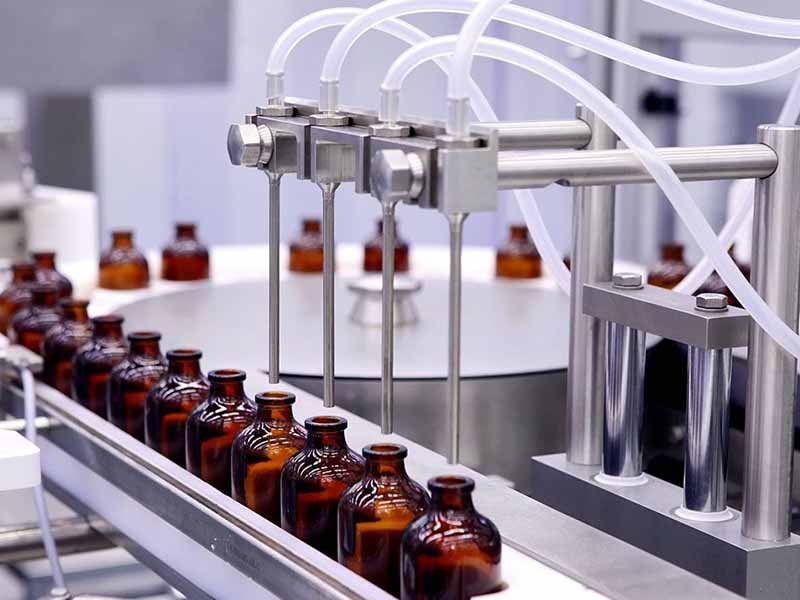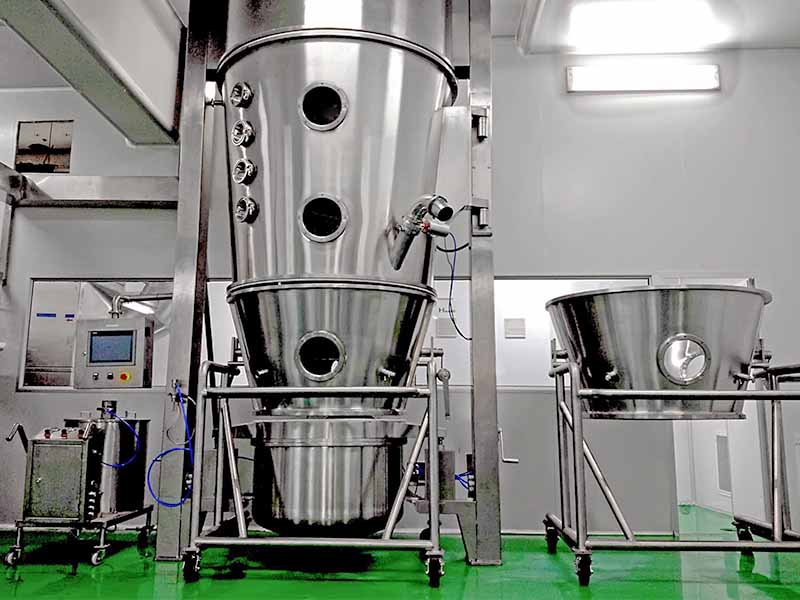The pharmaceutical industry is a strategic industry related to the national economy and people’s livelihood, economic development and national security, and is an important foundation for the construction of a healthy China – the “14th Five-Year Plan for the Development of the Pharmaceutical Industry” released in January 2022 proposed a systematic improvement of the manufacturing level of the pharmaceutical industry Goals: The full life cycle quality management of drugs and medical devices has been strengthened, the number of generic drugs that have passed consistency evaluation has further increased; the level of green, digital and intelligent development of enterprises has been significantly improved, safety technology and management levels have been effectively improved, and production safety risks have been reduced Management and control capabilities have been significantly enhanced.

01 Current Status Of China’s Pharmaceutical Industry Manufacturing Level
In recent years, the market size of biopharmaceuticals, health materials, medical equipment and devices has grown significantly, which has led to double-digit growth in revenue from the pharmaceutical business. In terms of profits, the manufacturing of chemical raw materials has grown rapidly. , biopharmaceutical manufacturing, sanitary materials and medical supplies manufacturing, medical equipment and equipment manufacturing, pharmaceutical special equipment manufacturing and other fields.
At the same time, the stability of my country’s pharmaceutical industry chain and supply chain has also encountered some challenges, including:
(1) Many scientific research support conditions (such as talents, information, etc.) required for drug research and development still need to continue to be strengthened. my country’s pharmaceutical industry needs to break through foreign technical barriers and industry financial barriers.
(2) Biological drugs are relatively dependent on imports of industrial supporting equipment and raw materials such as instruments and equipment for scientific research and production, raw and auxiliary materials.
However, in response to these challenges, my country’s pharmaceutical industry has made many improvements in recent years. In terms of high-end pharmaceutical equipment, some companies have launched many related products to solve the problem of localization. In the upstream of the biopharmaceutical industry chain, the number of companies engaged in the development of bioreactors, culture media, chromatography systems, fillers, filtration consumables and other products has gradually increased. The level of localization of these products has also been improved. Now, more and more companies are More domestic products are entering the supply chain of biopharmaceutical companies.
In addition, in the field of pharmaceutical packaging and pharmaceutical excipients, the industry is developing rapidly. The comprehensive strength of relevant enterprises in China has been steadily improved. The quality and production capacity of products such as borosilicate glass tubes have been improved. Advanced packaging such as prefilled syringes (PFS) have also been realized. Large-scale production and sales.
02 The Direction Of Promoting The System Upgrading Of Pharmaceutical Manufacturing Capabilities
In recent years, my country has issued a series of policies and guidelines on the manufacturing system for reference and compliance. In December 2020, the Industrial Internet Special Working Group issued the “Industrial Internet Innovation and Development Action Plan (2021-2023)”. In November 2021, the Industrial Internet Industry Alliance (AII) released the “White Paper on Digital Transformation of Biopharmaceutical Enterprises (2021)”. In 2022, the “Guide to Typical Scenarios of Intelligent Manufacturing for Pharmaceutical Enterprises (2022 Edition)” was released, describing 54 typical application scenarios of intelligent manufacturing for pharmaceutical enterprises in product development, production operations, quality control and other aspects, and introduced how to use digital tools and means to Solve problems in the management of pharmaceutical companies, thereby improving management efficiency and ensuring quality and safety.
Specifically, the system upgrade to promote pharmaceutical manufacturing capabilities can start from the following four points:
(1) Continue to improve quality and safety levels, improve product quality in key areas, strengthen corporate quality responsibilities, and improve the quality supervision system.
(2) Promote the digital transformation of the industry, empower pharmaceutical research and development and production with new generation information technology, promote the deep integration of information technology and production operations, and actively develop new models and new business formats.
(3) Promote the green and low-carbon development of the entire industry chain, build a green industrial system, improve the level of green manufacturing, and implement carbon emission reduction actions in the pharmaceutical industry.
(4) Improve safety risk management and control capabilities, focus on preventing production safety risks, and improve intrinsic safety, personnel skills and quality, and safety informatization levels.
Reducing costs, improving efficiency, and creating growth are important value manifestations of intelligent transformation. Biopharmaceutical companies can use digital tools to open up all business processes among personnel in various departments, enable rapid flow of information between departments, and improve the overall efficiency of business operations. At the same time, companies can use digital tools to reshape customer experience, actively respond to the diverse needs of business scenarios, and capture new business growth opportunities.
At present, pharmaceutical companies, driven by GMP, GSP and other industry standards, have gone through the informatization process of ERP, SCM, CRM, DRP, OA and other system constructions, and are entering a new stage characterized by integration, intelligence, and integration. Supply chains, global collaborative R&D, pharmaceutical e-commerce, digital factories, etc. have become new hot spots, and traditional pharmaceutical companies in the process of transformation will face more of the following issues: How to improve business process efficiency—how to break through information silos and create end-to-end end business processes to further improve production capacity; how to empower professional knowledge – pharmaceutical companies have many standards and systems and new technologies, and how to pass them on to employees to help innovation and development. To deal with these problems, companies need to leverage their ability to unify processes, quickly integrate ERP, PLM, QIS and other business systems, streamline GMP/GSP processes, build compliant pharmaceutical production and operation management systems, and comprehensively improve pharmaceutical companies through online approval. level of internal control and collaborative efficiency to promote compliance operations and efficient development.
03 Situation Of The Global Pharmaceutical Industry
3.1 Germany’s Digital Transformation Policy
In November 2019, Germany released the National Industrial Strategy 2030, which mainly includes improving the framework conditions of the industrial base, strengthening the research and development of new technologies and mobilizing private capital, and safeguarding the technological sovereignty of German industry on a global scale. Germany believes that the most important breakthrough innovation currently is digitalization, especially the application of artificial intelligence; it must strengthen support for small and medium-sized enterprises, especially in the digitalization process.
3.2 EU’s Medicines And Science And Technology Strategy
In order to meet unmet clinical needs, stimulate industry innovation, enhance the regulatory system’s adaptability, and consolidate the international status of the EU’s drug regulatory system, the European Commission released the “Pharmaceuticals Strategy for Europe” (PSE) at the end of 2020. PSE is regarded as the “cornerstone” of Europe’s health policy in the next five years and has important guiding significance for the development and management of the European pharmaceutical field.
In January 2021, the EU began to implement the ninth phase of the R&D Framework Plan “European Horizon (2021-2027)”. The program has a total budget of 95.517 billion euros and is the world’s largest publicly financed science and technology program.
3.3 U.S. Smart Manufacturing And Bioproduction Strategy
In 2018, the United States released the National Advanced Manufacturing Strategy, which proposed three major goals: developing and transforming new manufacturing technologies, cultivating the manufacturing workforce, and improving the level of the manufacturing supply chain. One of the specific goals is to vigorously develop future intelligent manufacturing systems, including intelligent and digital manufacturing, advanced industrial robots, artificial intelligence infrastructure, manufacturing network security, etc.
In 2019, the United States released the National Artificial Intelligence Strategy (2019 Update), which set a series of goals for the development of artificial intelligence and identified eight strategic priorities.

On September 12, 2022, the United States signed an executive order to launch the “National Biotechnology and Biomanufacturing Plan” to promote US biotechnology innovation and improve domestic biomanufacturing capabilities. The plan states that US$1 billion will be invested over five years to build a national bioindustrial manufacturing infrastructure to incentivize public-private sector collaboration to improve the manufacturing capacity of important products such as critical chemicals; in addition, there will be additional A $200 million investment will be used to strengthen the facility’s biosecurity and cybersecurity systems.
04 Conclusion
In recent years, digital technologies such as the Internet of Things, artificial intelligence, 5G, big data and cloud computing have brought new challenges and opportunities to traditional pharmaceutical production models, efficiency and business models. The application of these new technologies brings great potential to improve the production efficiency, quality and flexibility of the pharmaceutical industry. In the context of “Made in China 2025”, the country is also vigorously supporting the intelligent development route of pharmaceutical manufacturing. In the future, more intelligent technologies will be applied to the pharmaceutical industry to promote the formation of smart factories in the pharmaceutical industry.










